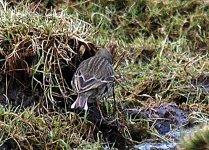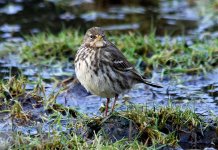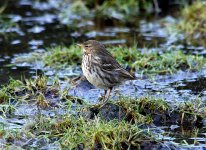alanc
Just an earthbound misfit

I wondered if this might be a Water Pipit seen at Stanpit Marsh today, The outer tail feathers were clearly white and the lower bill was yellow. Also, the legs are a red-browny colour, I would appreciate any thoughts
thanks
alan
thanks
alan






